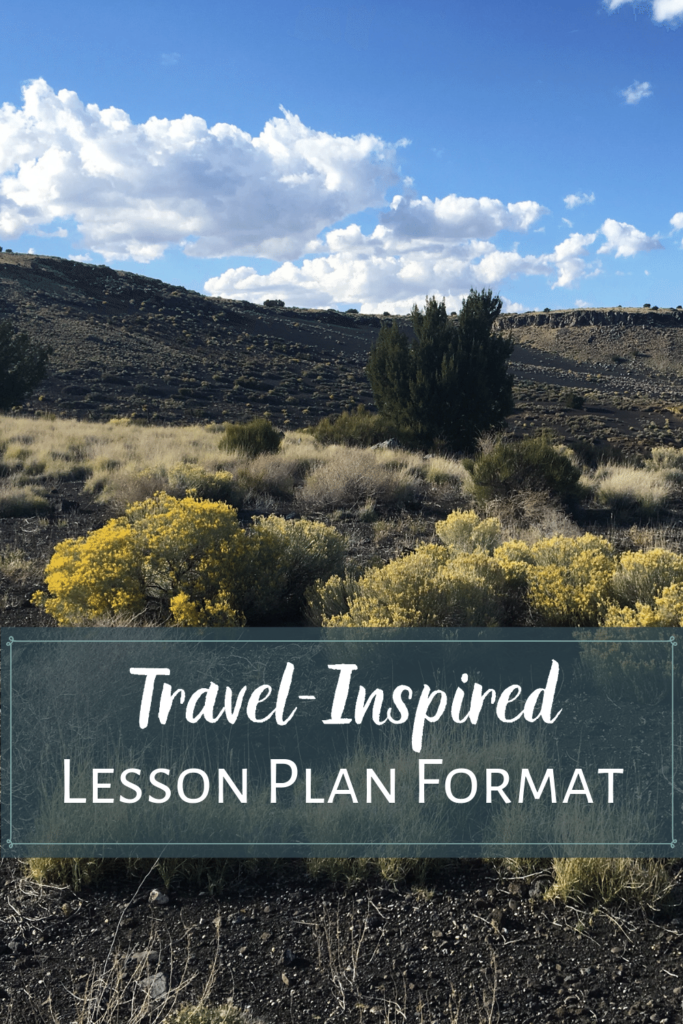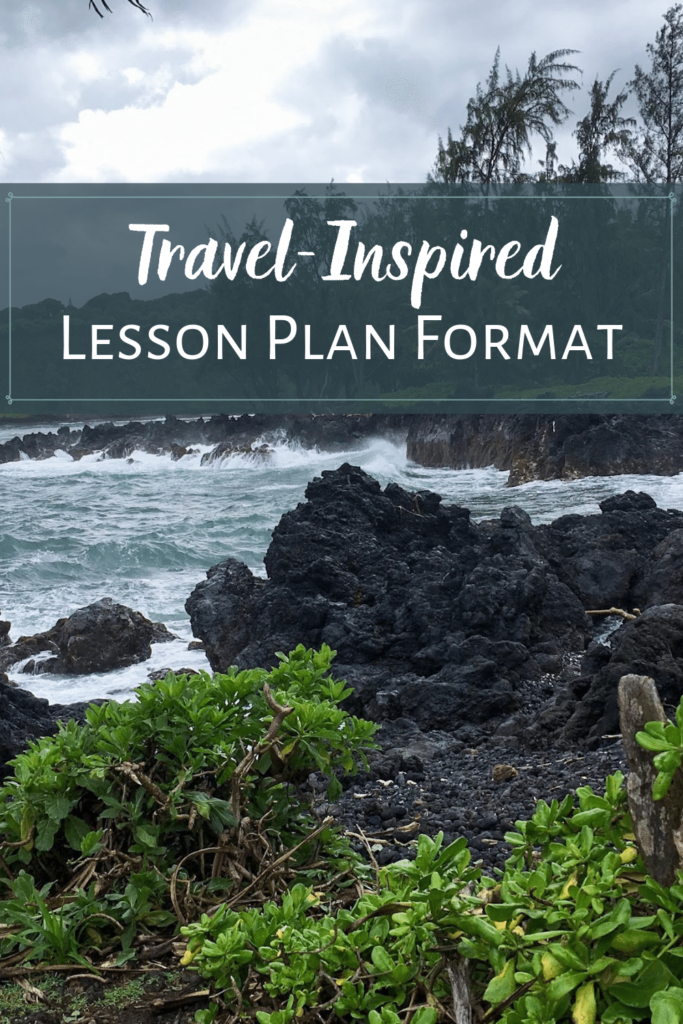Adventure in the Classroom: Travel-Inspired Lesson Plan Format
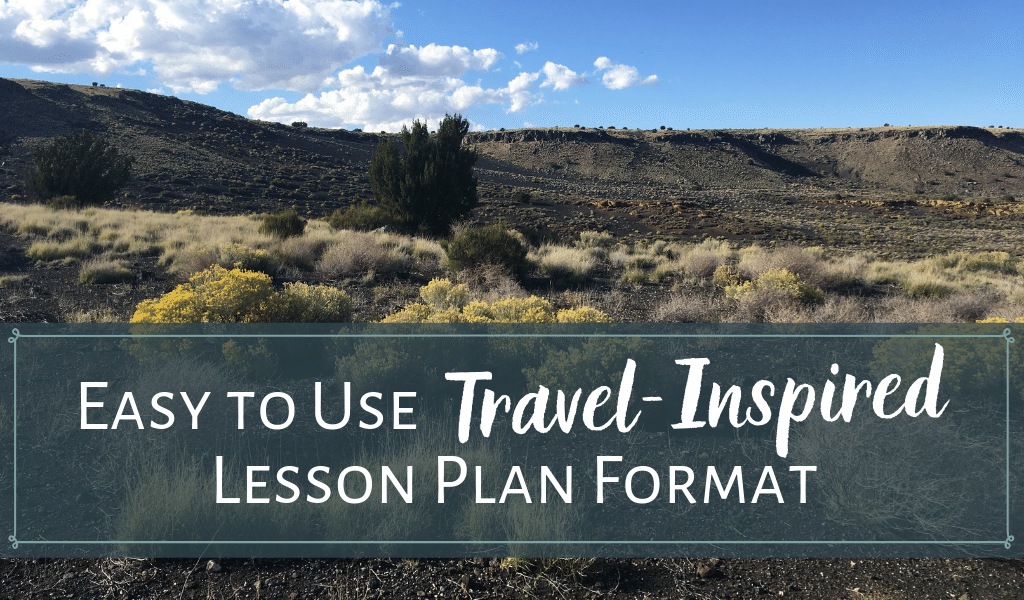
The volcanoes unit is one of my favorites to teach. Student buy-in is high because volcanoes are cool, but they have misconceptions that need to be debunked. How can I expect students to connect and truly understand concepts that are physically so far removed from them? Since I can’t bring them to the locations, the adventure has to start in the classroom. Follow this lesson plan format (with earth science examples!) to develop engaging travel-inspired learning.
During a volcano monitoring activity, students (freshmen in Southern Illinois – very far from any volcanoes) analyze the seismic activity on Hawaii to determine if a volcano eruption alert should be issued. They get all rowdy as the seismic activity increases and shout, “It’s going to blow!” “People are going to die, watch out!” The thing is though, Hawaii is formed by shield volcanoes, quiet eruptions of slow-moving lava, not Pompeii-style eruptions. Their vision of volcanoes is colored by what they’ve seen in movies and video games. Most have never even seen a real volcano.
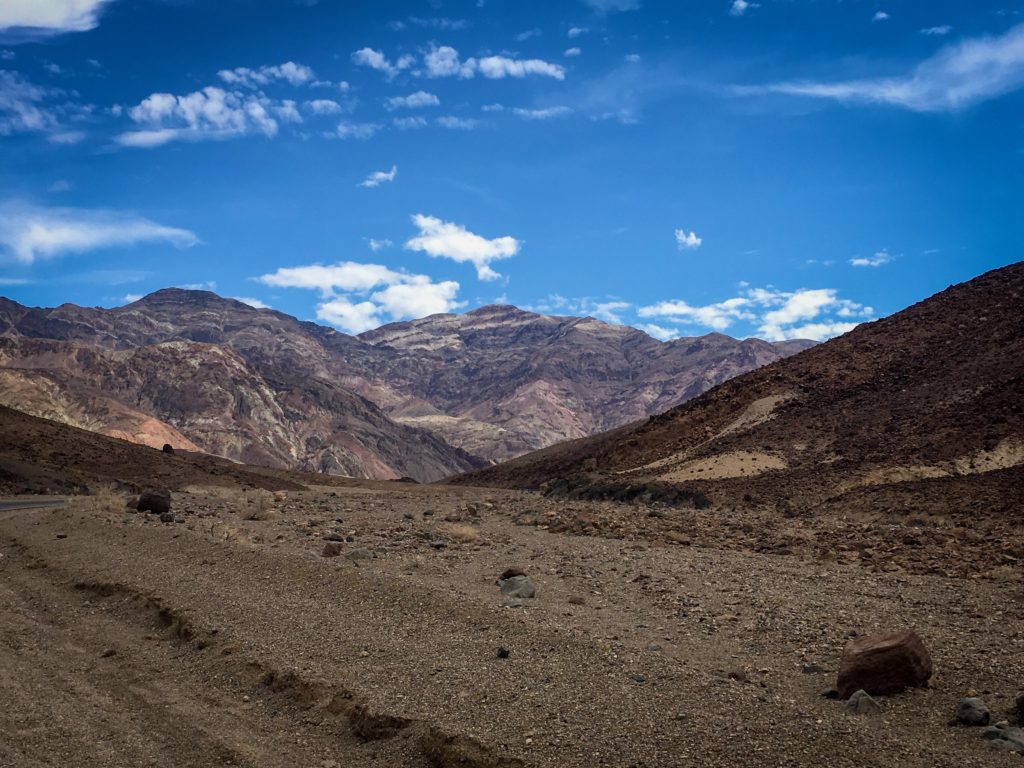
An activity is not enough for students to fully visualize the environments where the content occurs. I’ll break down each step of the lesson plan format to develop engaging travel-inspired learning. Sections of the volcanoes unit will be used as examples throughout, but these are the same steps I follow for all units.
Goals of Travel-Inspired Learning
Student will:
- Create a connection to the content
- Envision processes and phenomena that occur throughout the world
- Develop as global citizens who acknowledge and respect different cultures
Getting Started
Don’t feel like you need to change an entire course or even unit to fit the destination-based learning model. Start by tying in a single lesson to a travel experience that really spoke to you. My destination-based lessons started with a simple two-minute story that connected to the content; it wasn’t part of an intentional planning process. I’ve developed the travel-inspired lesson plan format to help you transition to destination-based learning.
When you are passionate about what you’re teaching, students pick up on that. They’ll get a piece of the connection you’re sharing about your travel and how it connects to the content.
Exploration Passport
Each student has an Exploration Passport that they use for the entire course. Check out this article explaining Explorations Passports and for a FREE passport template. I do NOT let anyone take these out of the classroom. If they leave, you know they’re going to end up left in a locker, in a friend’s mom’s car, and who knows what other random places.
Exploration Passports include a United States map and a world map, so students know where we’re “adventuring.” This addition was made after an alarming number of students couldn’t find states on a U.S. map (including Illinois – where we live).
The pages within the passport are used as exit slips, learning reflections, and students’ own travel dreams.
Lesson Plan Format: Step-by-Step
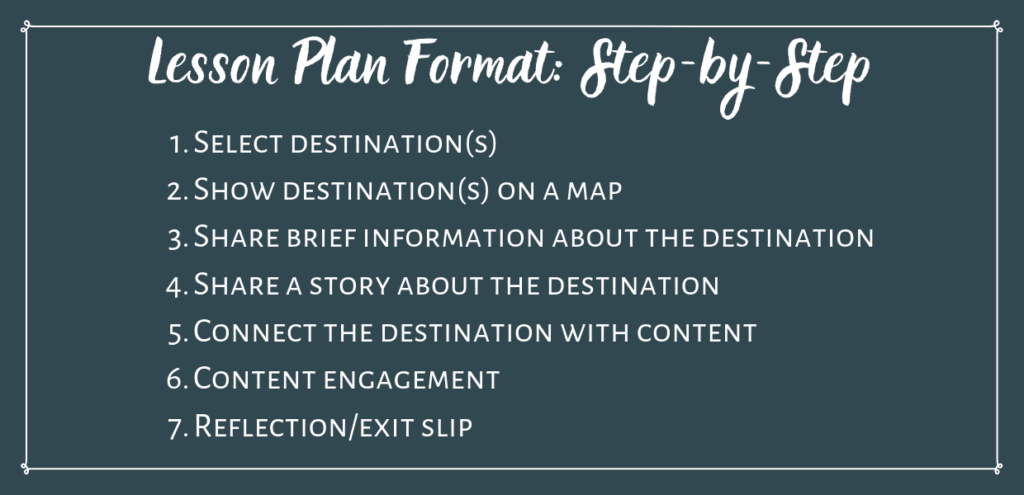
1. Select Destination(s)
You know your content and you know the travels you’ve loved the most. It’s okay to pick more than one destination that meets the needs of the current concepts. Try to stick to one-to-three destinations, otherwise the presentation becomes too overwhelming and jumbled.
Start your lesson by sharing the adventure destinations for the day. Pictures, a short video, or a quick story are a great introduction. Try to use your own materials when possible. Have a selfie on location? Students enjoy seeing pictures of you at the destinations and you know how they love selfies. Now, students are hooked to your lesson and they’ll be engaged when you tie in the content.
Volcano Example:
Hawaiian Islands – Shield volcanoes
Sunset Crater Volcano National Monument in Arizona – Cinder cone volcano
Eyjafjallajӧkull* in Iceland – Composite volcano (also called strato volcano)
*No, I cannot pronounce the name of that volcano. This Icelandic person can though.
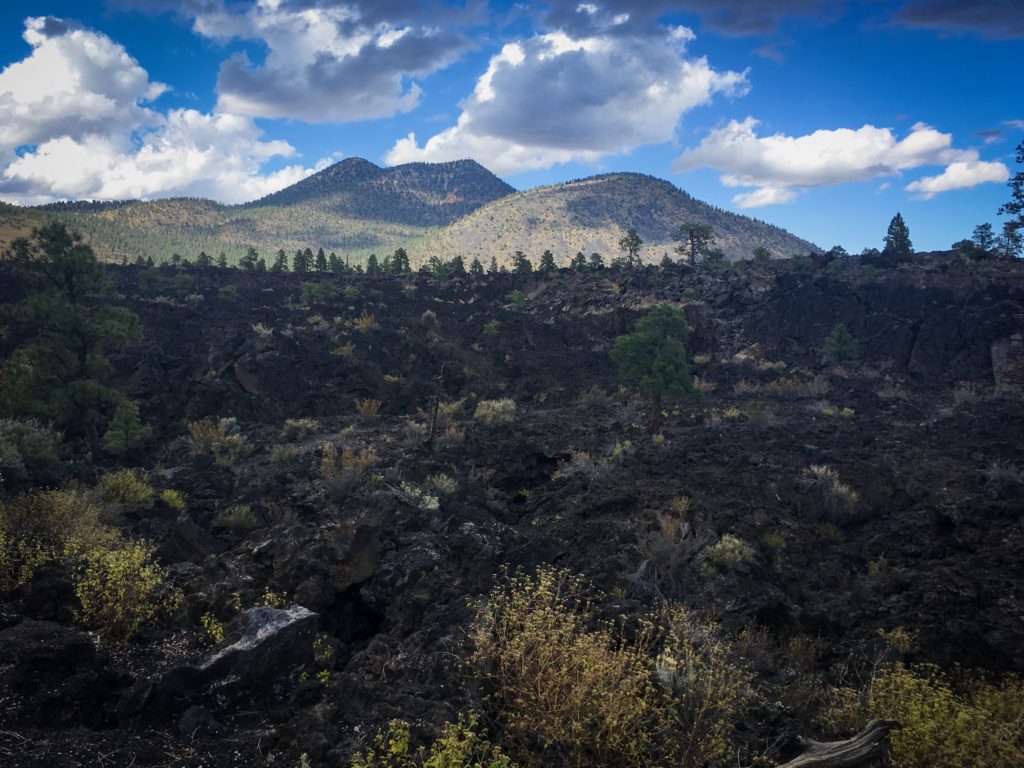
2. Show Destination(s) on the Map
Can you locate all 50 states on a U.S. map? Take a minute and try it out on this online quiz. How did you do? Too many high school students struggle with geography. I could no longer sit idly by and observe the geography illiteracy at the high school.
Show the U.S. and/or world maps with the locations, so students are oriented with your destinations. Encourage students to identify and mark the locations on their Exploration Passport maps.
Volcano Example:

3. Destination Information
Share brief information about the destinations with your students. This isn’t quite the time for content, but cultural information. I teach science, but I also have a responsibility for students to become well-rounded global citizens. I want people to be excited to learn about different areas of the world and the people who make those spaces unique.
Information Ideas
- Language
- Ecosystems
- Popular foods
- Currency
- Popular activities
Volcano Example:
Hawaii is the only state to have two official languages: English and Hawaiian. Although Iceland has the word Ice in the name, there is a lot of beautiful green space. Iceland has over 10,000 waterfalls. Arizona is not just a desert! Some areas of Arizona have mountains that are high enough in elevation to have annual snowfall. The average annual snowfall of Flagstaff is about 100 inches.
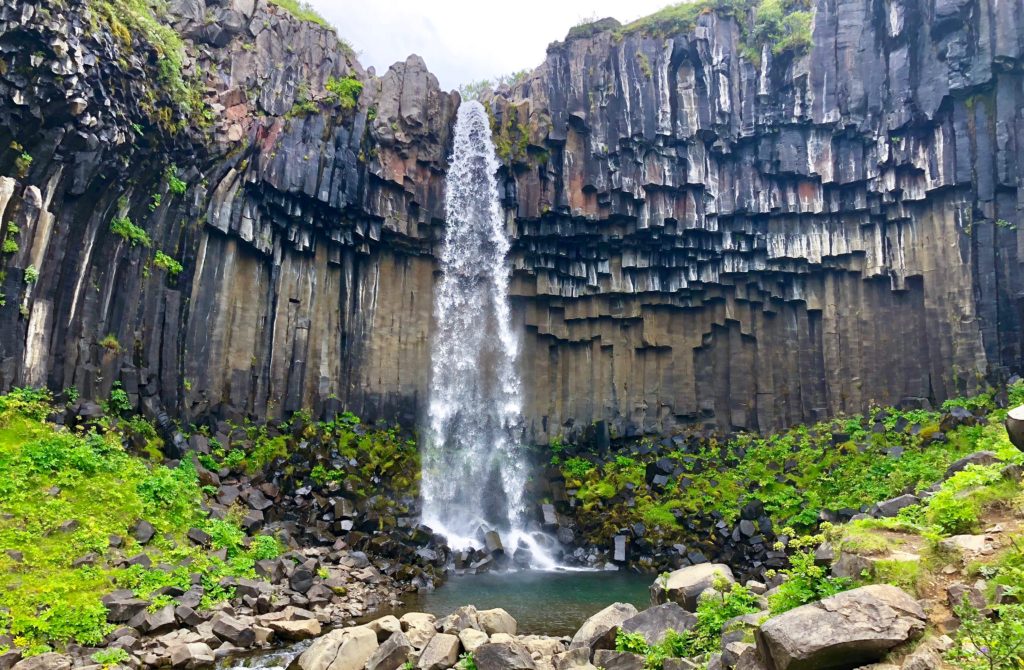
4. Share a Story
If you haven’t already, share a quick story about your experience at one of the destinations. Far off locations don’t seem real until you build a connection with them. You’re not sharing a novel here, so don’t sweat about it eating into your lesson time. Spending a moment engaging students will increase their overall learning better than more time can.
Volcano Example:
Eyjafjallajӧkull last erupted in April 2010 over spring break and it released so much ash and dust that flights from Europe were grounded. A lady I worked with got stuck in Ireland for an extra week because she couldn’t fly out. “Shucks,” to being stuck on vacation for an extra week.
5. Connect with the Content
Now it’s time to connect your destinations to the content. I know there were several steps to get to this part, but by now your students are mesmerized by locations around the world and you have their attention. Quickly share with them where the lesson is headed.
Volcano Example:
So, what do all of these locations have in common? They all were formed by volcanoes. However, volcanoes are not all the same. Some have violent eruptions, other quiet eruptions. Now, we’ll take a look at different types of volcanoes and how we can determine which type of volcano formed each destination.
6. Content
This is the meat and potatoes of your lesson. The bulk of your time will be spent here diving into each of the concepts. Sometimes I finish the notes for a section in a day, other times it is spaced out over a week. You know your content better than anyone else, so you’ve got this part.
Volcano Example:
You can access my exact unit slides! Teacher sharing is the best, so feel free to use them. COMING SOON!
7. Reflection/Exit Slip/Etc.
The final step of the lesson plan format is assessing students’ learning. It’s important for students to have time to process what they learned and share that information with you. I’d love to tell you I do this every day, but let’s be real, sometimes I’m just happy to make it through the hour unscathed. In all seriousness, we want to make sure our students are learning and quick formative assessments are a great way to do that. The strategy you select here does not really matter as long as you are doing something. Mix it up to keep students on their toes and play to different students’ strengths.
Ideas for Reflection/Exit Slip
- Students write answers to 2-3 main point questions
- One-word “what I learned”
- Draw images explaining a process
- Share something that surprised you or you didn’t know before
As you review students’ responses, quickly sort them into “got-it” or “not-quite” piles. Before starting the next day’s lesson, check-in with students who misunderstood a major concept.
Volcano Example:
Check out the questions at the end of the volcano slides for the reflection questions. Students answer these questions in their Exploration Passports. I can look at them as students submit their passports or before the next class period. COMING SOON!
Pin it! Share it!
